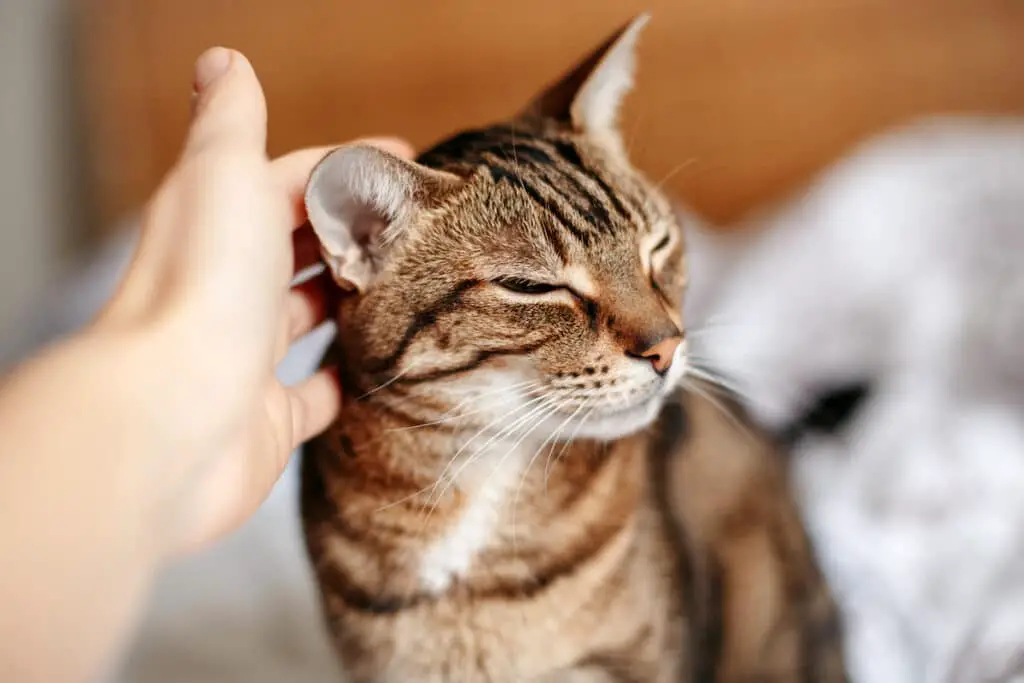Often, your cat will growl in order to let you know that something is up, or that he’s not quite comfortable with you. Sometimes, these growls are warning signs of anxiety or stress, and other times they are signs that your cat is afraid of new people. Whatever the case, you need to know what to do if your cat growls.
Signs of stress or anxiety
Whether your cat growls, yowls, flinches or trembles, it can be a sign of stress or anxiety. You can learn to identify these symptoms and reduce your cat’s stress levels.
Cats are naturally anxious creatures. Some of the most common signs of stress or anxiety in cats include excessive grooming, scratching up furniture, and panting. They also show increased aggression towards other pets or people. They may also have decreased appetite.
If you suspect your cat is stressed or suffering from anxiety, take it to the veterinarian right away. This will allow the doctor to rule out any underlying medical issues that may be causing the symptoms. Your veterinarian will ask questions about your cat’s behavior and may prescribe medication to help ease the stress.
Cats respond to threats with the stress hormone cortisol. When stressed, your cat may not want to go out in the open, which can be a sign of anxiety. They may also have dilated pupils, low energy levels, and fluffed up tails.
A sign of fearful or threatened by new people
Whether you have a single cat or a multi-cat household, it’s important to watch out for the signs that your cat may be feeling uncomfortable or threatened. Cats are territorial creatures and if they feel threatened, they will often growl.
The best way to deal with this behavior is to identify the source of the stress and remove it. You can’t always remove the stimulus, but you can change the environment to make your cat more comfortable.
While the source of the fear may be physical, it can also be psychological. Cats can display clinical signs of fear when faced with an unfamiliar person or object.
If your cat is growling to scare you or others, you might want to take it to the veterinarian for a proper diagnosis. A veterinarian will examine your cat’s medical history to rule out other possible health problems. They will also ask you about the events that may have contributed to your cat’s fearful behavior.
A sign of acceptance as part of the family
Having a cat in the house is akin to having a child in the family. The best way to woo your feline is to provide a variety of kitty-approved distractions, such as a variety of toys and treats, and some one-on-one attention. While your cat may prove to be a bit more demanding than your own family dog, it will undoubtedly enjoy the company of its feline companions. Having more than one or two kitty cats in the house can be a bit of a stressor, so be sure to provide some type of reassurance and relaxation. The cat might have some fun pranks for its own good time, such as playing the latest in cat video games or having a good ol’ fashion belly rub.
Warning signs of a growl from your cat
During times of stress, a cat can growl. The purpose of the growling is to warn other cats and animals that something is going on. During times of anxiety, a cat may growl more frequently than other cats.
If you find your cat growling, there are some things you can do to calm it down. You should try to give it some room and personal space. You may also want to take the cat to a veterinarian to check for pain.
Generally, the growling is an attempt to communicate with people. However, it can be very scary for your cat. Your cat may growl at people, pets or objects, and you should not touch them if you notice them growling.
If you are unsure whether your cat is suffering from pain or anxiety, it is best to seek the advice of a veterinarian. A veterinarian will be able to diagnose your cat and give you a treatment plan.














